Manåmko'
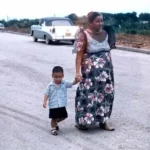
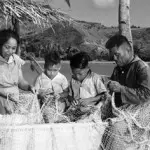
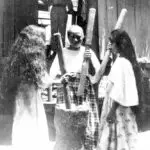
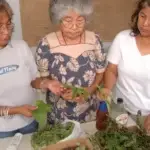
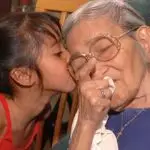
Elders
Manåmko’ is a CHamoru/Chamorro word which means the elderly. Manåmko’ can be translated into two words: The main word or subject is amko meaning elderly, with man making it plural.
Like most indigenous cultures, CHamoru elderly are the first teachers for children in the family or clan. CHamorus are taught to respect and honor manåmko’ for their role as teachers, passing and sharing the CHamoru traditions and culture. Respect for them grows as they age for they are responsible for knowing their culture, traditions, genealogy, history, land, secrets, language, crafts, and leading the next generations into the future. They are the link from the past to the future of the CHamoru people and the land.
Manåmko’ are respected simply because of their age and the knowledge that they hold. When a younger CHamoru meets manåmko’ they are expected to nginge’ which is the CHamoru way of showing respect and taking in some of that elder’s spirit and wisdom. To nginge’ one takes the elder’s right hand and bows, touching the back of the hand to one’s nose and saying ñora to a woman and ñot to a man. It is also acceptable to kiss the manåmko’s cheek. In return manåmko’ are obliged to give her or his blessings.
Being around the manåmko’ and listening to what they have to say helps keep the CHamoru culture alive as they pass on traditions and customs. This cultural sharing and teaching can be observed at family and social gatherings. An example can be seen in almost any CHamoru kitchen in preparation for a function. The elder is in charge of the kitchen and assigns people their duties. At this time the manåmko’ shares their knowledge of traditional ways of preparing a dish or a family recipe and instructs the younger generation on how things should be done. This time together is also used for passing on oral histories, traditions, secrets, and any other culturally relevant knowledge.
The knowledge from manåmko’ can only be fully understood when man’hoben or children are ready to listen and understand that they need this knowledge to continue age old traditions. Manåmko’ are the living CHamoru encyclopedia.
By Lina Taitingfong
For further reading
Chamorro Heritage, A Sense of Place: Guidelines, Procedures and Recommendations For Authenticating Chamorro Heritage. The Hale’-ta Series. Hagåtña: Department of Chamorro Affairs, Research, Publication and Training Division, 2003.
I Ma Gobetna-na Guam: Governing Guam Before and After the Wars. The Hale’-ta Series. Hagåtña: Political Status Education Coordinating Commission, 1994.
Topping, Donald M., Pedro M. Ogo, and Bernardita C. Dungca. Chamorro-English Dictionary. Honolulu: University of Hawai’i Press, 1975.
